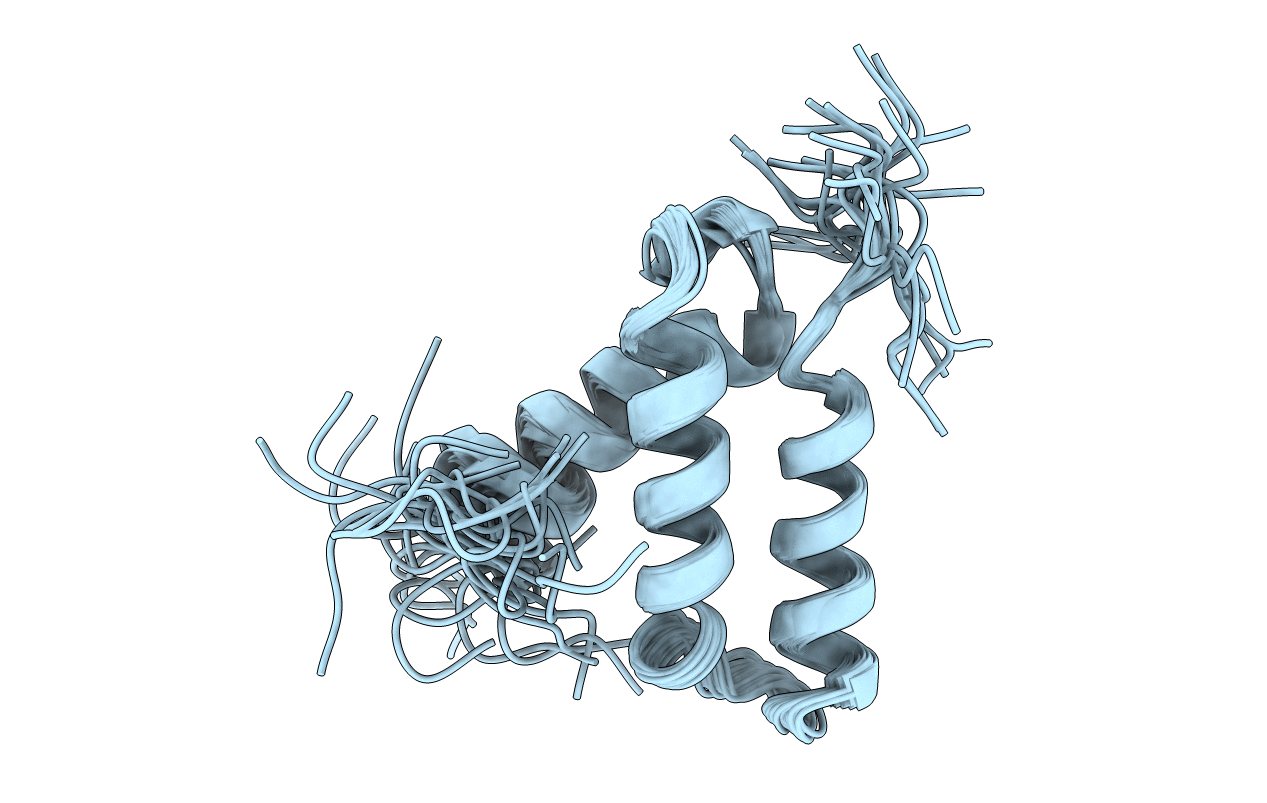Abstact
MTCP1 (for Mature-T-Cell Proliferation) is the first gene unequivocally identified in the group of uncommon leukemias with a mature phenotype. The three-dimensional solution structure of the human p8(MTCP1) protein encoded by the MTCP1 oncogene was determined by homonuclear proton two-dimensional NMR methods at 600 MHz. After sequence specific assignments, a total of 931 distance restraints and 57 dihedral restraints were collected. The location of the three previously unassigned disulfide bridges was determined from preliminary DIANA structures, using a statistical analysis of intercystinyl distances. The solution structure of p8(MTCP1) is presented as a set of 30 DIANA structures, further refined by restrained molecular dynamics using a simulated annealing protocol with the AMBER force field. The r.m.s.d. values with respect to the mean structure for the backbone and all heavy atoms for a family of 30 structures are 0.73(+/-0.28) and 1.17(+/-0.23) A, when the structured core of the protein (residues 5 to 63) is considered. The solution structure of p8(MTCP1) reveals an original scaffold consisting of three alpha helices, associated with a new cysteine motif. Two of the helices are covalently paired by two disulfide bridges, forming an alpha-hairpin which resembles an antiparallel coiled-coil. The third helix is oriented roughly parallel to the plane defined by the alpha-antiparallel motif and its axis forms an angle of approximately 60 degrees with respect to the main axis of this motif.



